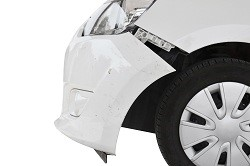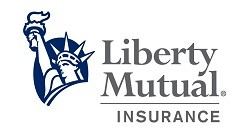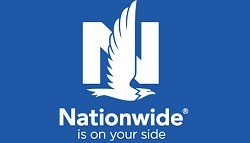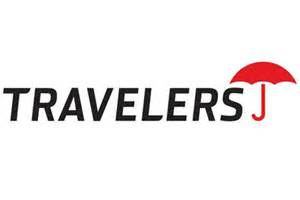Auto Insurance Claims: Step-By-Step Guide & Advice

After a car accident, the prospect of dealing with insurance adjusters and claim forms can be more stressful than the accident itself. Be patient and optimistic. Filing claims and waiting for decisions can be a battle of attrition, but in many cases, the process is faster and smoother than you might think.
Set the stage for a successful claims process by also reading what to do after a car accident. Read on to find out more about the process and how to make it work for you.
1) WHEN TO FILE A CLAIM
2) THE BASIC STEPS OF THE CLAIMS PROCESS
3) WHOSE FAULT IS IT?
4) PROPERTY DAMAGE CLAIMS: GETTING CAR REPAIRS
5) BODILY INJURY CLAIMS: GETTING MEDICAL CARE
When to File a Claim
Whether to file a claim after an accident depends on what kind of insurance coverage you carry and who is at fault. Here are some tips for three major scenarios:
1) Your car is damaged – How did it get that way?

It’s clearly the other driver’s fault – File a claim with the other driver’s insurance company under that driver’s liability policy.
It’s clearly your fault – File a claim with your own insurance company under your collision policy.
The fault is shared or not clear – File a claim with both your insurer and the other driver’s. Once the fault is determined you will get coverage under one or both policies.
Damage is not due to a collision – If your car is stolen, vandalized, or damaged by weather, file a claim under your comprehensive insurance.
The other driver is uninsured or underinsured – Your own insurance company will cover your losses if you have uninsured/underinsured motorist coverage.
2) You are injured – How were you injured? Who injured you? Do you live in a no-fault state?

You have PIP or MedPay insurance – File a claim with your own insurance company under your personal injury protection (PIP) or MedPay insurance, even if you are not at fault or if you have health insurance. Other insurance policies may eventually pay all or part of your expenses, but filing a PIP or MedPay claim will make sure you’re not stuck with medical bills as that gets sorted out.
It’s the other driver’s fault – If the other driver was at fault, or if the fault isn’t clear, you’ll file a claim with the other driver’s insurance company under that driver’s liability policy.
The other driver is uninsured or underinsured – Your own insurance company will cover your losses if you have uninsured/underinsured motorist coverage.
3) Minor damage to your car and no injuries

It’s the other driver’s fault – When the other driver’s liability policy covers your losses, you don’t pay a deductible. So even when damage is minor, file a claim under that driver’s liability insurance.
It’s your fault – If you can live with the minor damage, or if the cost of fixing it will be not much more than your deductible, consider not filing a claim. The small reimbursement after your deductible may amount to less than your future increases in insurance rates.
The Basic Steps of the Claims Process
Procedures vary depending on your insurance company and your state – if you have any questions ask your adjuster – but in general, here’s how the claims process will work:
1. Contact Your Insurance Company – Contact your agent or insurer to report the accident as soon as possible. Be prepared to provide the following information:
· Which covered vehicle was involved
· Who was driving
· Location and time of the accident
· A basic description of the accident and the severity of the damage
· The name and insurance information of the other driver
· Names and contact information of others involved in the accident and witnesses
Take notes and write down the claim number you’re provided, plus the name and direct phone number of the person you talk to.
Claims Contacts For Some of the Top Car Insurers

800-274-4499

800-2CLAIMS (225-2467)

800-421-3535

800.252.4633
2. File a police report – Your insurance company will request a police report number. If you did not get a police report at the scene, you could still go to a local police station to file a report.
3. Follow up with insurance adjuster – The insurance company will assign an adjuster to your claim. The adjuster will most likely contact you for additional information. Stick to the facts and avoid speculation when describing what happened. Provide any photographs you took at the scene and the contact information of any witnesses. Remember that the conversation will be recorded and will be used when determining who was at fault. If you are filing a personal injury claim with the other driver’s insurance company, you may want to contact an attorney before this step.
In addition to gathering information about the accident, the adjuster will either inspect the damage to your vehicle or will ask you to take the car to a certified repair shop that will perform the inspection.
4. Evaluation – Your adjuster will consider and evaluate the facts and your policy, inspect the damage, and potentially make an initial payment.
5. Resolution – The adjuster will authorize the final payment. You’ll sign a release, accepting the payment as payment in full for the case.
Whose Fault Is It?
Who is at fault for an accident matters, since that driver’s applicable insurance coverage will be responsible for paying for any losses. Here are some essential things to know about how fault is determined and allocated:
Adjusters will establish responsibility – Each insurance company’s adjuster will weigh the statements of each driver and any witnesses — plus the information in the police report and any other evidence — and decide who is at fault for the accident. If the adjusters for each insurer come to different conclusions, the two insurance companies will communicate and try to agree. In the rare cases when they cannot agree, the fault will be determined by a lawsuit in civil court.
The fault is sometimes shared – In many states a driver can be found partially at fault. So if you are found to have contributed to the accident in even a small way, the amount you can recover from the other driver’s insurance company could be reduced proportionally.
Your insurance company will represent you in court – If you are at fault and you are sued by the other driver in a personal injury case, your insurance company will represent you in court and any negotiations for a settlement.
You have to deal with the other driver’s insurance company if that driver is at fault – You may be able to get assistance and advice from your insurance broker or insurance company, but ultimately, you’ll file a claim with the other insurer and will get coverage under that driver’s policy.
You may want legal representation when the other driver is at fault – When injuries are severe, the other driver’s insurance company may be more reluctant to pay for some bills either in full or in a timely way. In these cases, you would need to obtain your legal representation, but personal injury attorneys work on a commission basis, so you would not have to pay legal fees out of pocket.
Property Damage Claims: Getting Car Repairs
Your insurance company will provide detailed instructions for getting your car repaired, but you need to be aware of the following essential considerations:
Don’t fix anything before the adjuster’s inspection – The insurer will want to inspect the damage to the vehicle before authorizing repairs. The exception to this rule is when delaying a repair will cause the car to be damaged further. But even in these cases, discuss the short-term repairs with your insurance company first. Anything such as a broken sunroof that is letting in the weather, or a bumper/muffler dragging on the street, needs to be fixed as soon as possible. Insurers often won’t pay for any damage that could have been prevented so follow these steps in such cases:
· Confirm with the insurer that such damage exists, and the car needs immediate repair. They’ll likely give you specific instructions.
· Take pictures to document the damage that will be repaired.
· Let the shop know the nature of the work if they don’t already. They will confirm that the repairs were necessary to prevent further damage.
· Keep all receipts and documentation.
· Provide information and documentation to insurers as they request it.
You can choose your repair shop – You’re never required to use the shop the insurance company recommends but there may be advantages in doing so.
· If more damage is exposed in the course of the repairs, the insurer will approve repairs faster at an authorized repair shop. Otherwise, you may have to wait for additional inspections by the adjuster.
· The authorized shop will get paid directly by the insurance company (which is not always true when repairs are done elsewhere).
You don’t have to accept third-party parts – When there are cheaper sources of replacement parts than the original equipment manufacturer (OEM), your insurance company may not be willing to pay for the more expensive option. While the insurer is not obligated to pay for the car to be repaired with OEM parts, they must give you the option to pay the extra cost to have your vehicle repaired with original parts.
You can appeal the insurance company’s decisions – If you have concerns about how the insurer is handling your claim, you have many avenues of recourse:
· Contact your agent – If you purchased your insurance through an agent, that agent could act as an intermediary between you and the insurance company. You’re the agent’s customer, and in most cases, they will be willing to assist.
· Contact the insurer – Most states require insurance companies to provide a way to appeal decisions. Ask the insurer to take your claim further up the ladder in the organization.
· Request an independent appraisal – Under the terms of most insurance policies, you have the right to an independent appraisal if you disagree with the insurance company’s valuation of a totaled car.
· Contact state regulators – If you’re unable to reach an agreement with the insurance company, you can file a complaint with your state’s insurance department or attorney general’s office. The National Association of Insurance Commissioners may have your state’s contact information here.
· Retain an attorney – You have the right to get legal representation to protect your rights and to represent you in disputes with an insurer.
Bodily Injury Claims: Getting Medical Care
It’s essential to prioritize your health when getting medical care after a car accident.
Consider the following as you seek medical treatment:
Get treatment immediately and as injuries become apparent – Don’t wait to get treatment after the accident or if aches and pains arrive later on. Car repairs can wait, but injuries require immediate treatment to avoid medical complications. Make sure all health care providers understand that your injuries are the result of a car accident. Provide them the auto insurance information for your policy and the other driver’s policy as well as any health insurance you have. Many health care providers will be willing to bill car insurance companies directly, but in some cases, you’ll need to submit the medical bills to the insurance company for reimbursement.
You can get help from an attorney for a liability claim – If you have serious injuries caused by another driver, it is a good idea to contact an attorney to represent you as you file a claim against the other driver’s liability policy. Personal injury attorneys provide initial consultations for free and will represent you on a contingency basis, which means they only get paid if your claim is successful.
Written by Joshua Taylor, WalletHub Editorial Team Edited by Doron Yaniv







